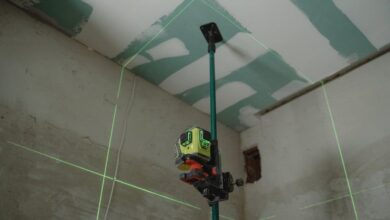How to Choose Durable Levels for Accurate Alignment
Choosing the right level for your alignment tasks can significantly impact the precision of your projects. Whether you are a professional contractor, an architect, or a DIY enthusiast, understanding how to select a durable level is crucial for achieving accurate results. With various options available on the market, it can be overwhelming to find the tool that best suits your needs. Here’s a guide to help you navigate through the selection process.
Material Matters
When it comes to durability, the material of the level is of paramount importance. Levels are commonly made from aluminum, plastic, or wood. Aluminum levels are particularly popular due to their resistance to bending and warping, ensuring longevity even under tough conditions. Plastic levels are lighter and often less expensive but may lack the robustness required for heavy-duty tasks. Wooden levels, while traditional, can be susceptible to environmental conditions such as moisture, which can affect their accuracy over time. Assess your working environment and choose a material that can withstand the demands of your projects.
Type of Level
Understanding the different types of levels available is essential. The most common types include spirit levels, laser levels, and digital levels. Spirit levels, featuring liquid-filled vials, are simple yet effective for many applications. Laser levels project a beam of light, providing a precise reference line that is visible over long distances. Digital levels offer electronic readouts, making it easy to achieve exact measurements. Each type has its pros and cons, so consider your specific alignment needs, the complexity of your projects, and your budget before making a decision.
Length and Size
The length of the level you choose can affect its usability. Shorter levels are more portable and ideal for smaller tasks, while longer levels provide greater accuracy for larger projects. A 24-inch level is a standard choice for many applications, striking a balance between portability and precision. However, if you work on larger construction sites, investing in a 48-inch or longer level may be beneficial. Always consider the scope of your work and opt for a size that allows you to achieve the best results without compromising on convenience.
Vial Quality
The accuracy of a level largely depends on the quality of its vials. Look for levels with precision vials that are calibrated for accuracy. High-quality vials will feature clear markings, enabling you to read them easily from various angles. Ensure that the vials are made from shatter-resistant materials to withstand potential impacts. Additionally, check for levels that have a protective cover over the vials, as this can prevent damage and maintain accuracy over time.
Brand Reputation
When choosing a durable level, consider the reputation of the brand. Established brands often have years of experience in manufacturing precision tools and are known for their quality. Read reviews and seek recommendations from professionals in your field. A well-regarded brand will often provide warranties, which can be an indicator of confidence in their product. Investing in a reputable brand can save you from the frustration of frequent replacements and inaccuracies.
Maintenance and Care
Even the most durable levels require proper care to maintain their accuracy. Regularly check the level for any signs of damage, such as bent frames or broken vials. If using a spirit level, ensure that it is stored flat to prevent warping. For laser and digital levels, keep the lenses clean and protect them from dust and debris. Adopting a few simple maintenance practices can extend the lifespan of your level and ensure that it remains reliable for all your alignment tasks.
Final Thoughts
Selecting a durable level goes beyond just picking a tool off the shelf. It involves understanding the materials, types, sizes, and brands available, as well as maintaining your chosen level to ensure long-term accuracy. By taking these factors into account, you can confidently choose a level that will serve you well, providing the precision needed for all your alignment projects. Investing time in choosing the right level will pay off in the quality of your work and the satisfaction of a job done right.







